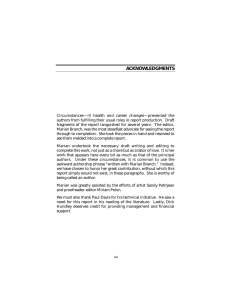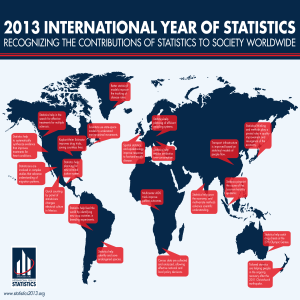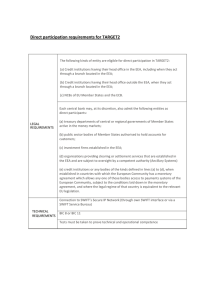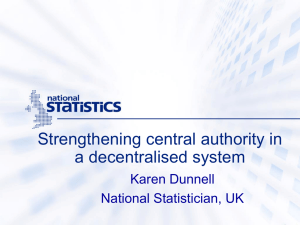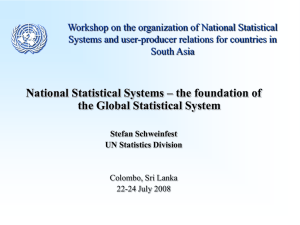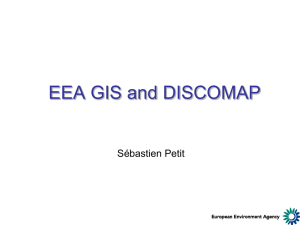Environmental challenges and statistical solutions
advertisement
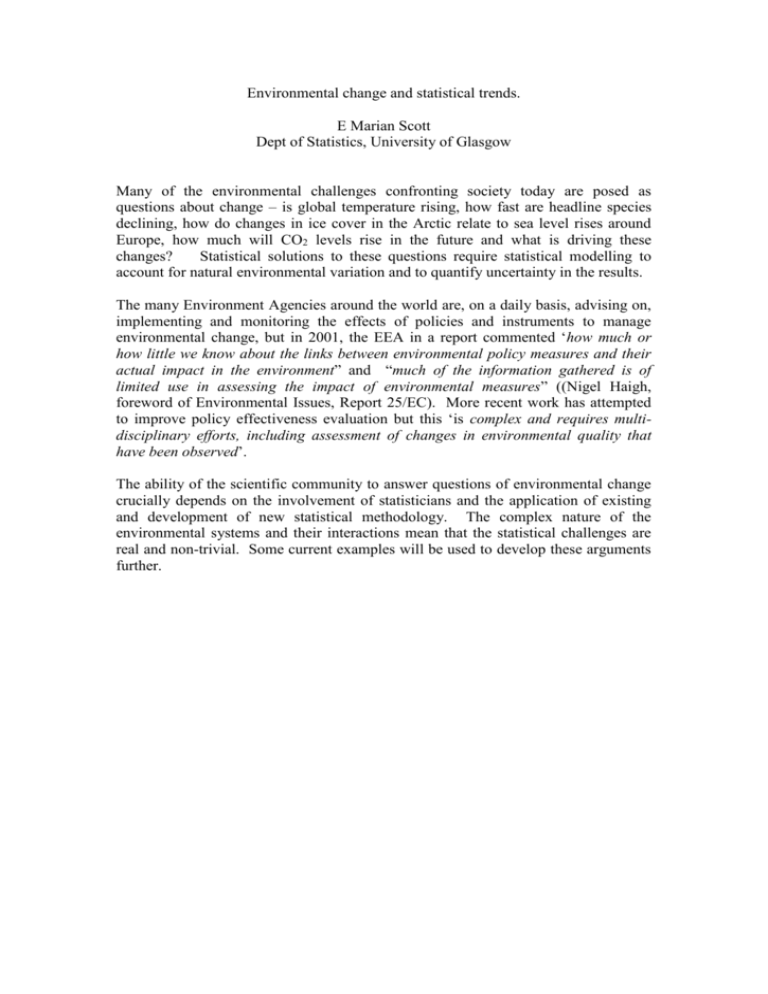
Environmental change and statistical trends. E Marian Scott Dept of Statistics, University of Glasgow Many of the environmental challenges confronting society today are posed as questions about change – is global temperature rising, how fast are headline species declining, how do changes in ice cover in the Arctic relate to sea level rises around Europe, how much will CO2 levels rise in the future and what is driving these changes? Statistical solutions to these questions require statistical modelling to account for natural environmental variation and to quantify uncertainty in the results. The many Environment Agencies around the world are, on a daily basis, advising on, implementing and monitoring the effects of policies and instruments to manage environmental change, but in 2001, the EEA in a report commented ‘how much or how little we know about the links between environmental policy measures and their actual impact in the environment” and “much of the information gathered is of limited use in assessing the impact of environmental measures” ((Nigel Haigh, foreword of Environmental Issues, Report 25/EC). More recent work has attempted to improve policy effectiveness evaluation but this ‘is complex and requires multidisciplinary efforts, including assessment of changes in environmental quality that have been observed’. The ability of the scientific community to answer questions of environmental change crucially depends on the involvement of statisticians and the application of existing and development of new statistical methodology. The complex nature of the environmental systems and their interactions mean that the statistical challenges are real and non-trivial. Some current examples will be used to develop these arguments further.

